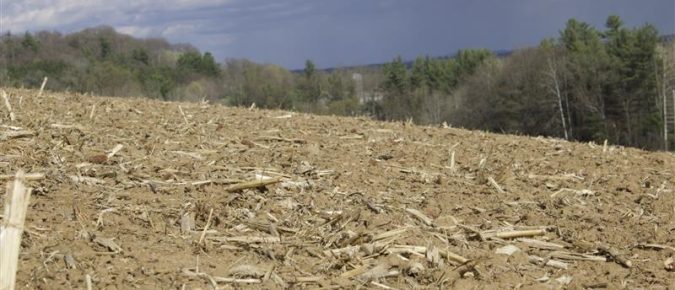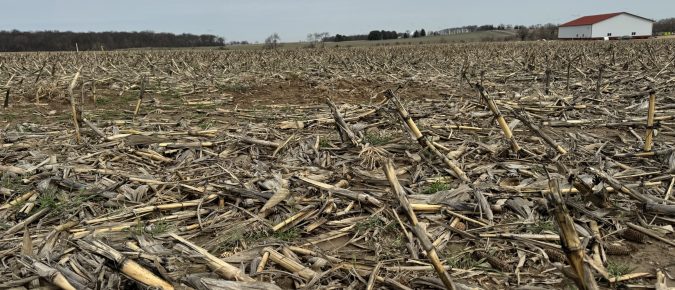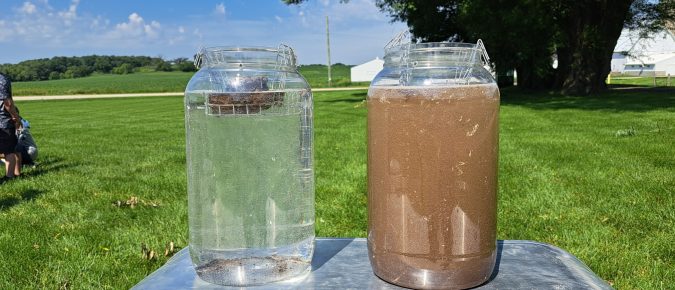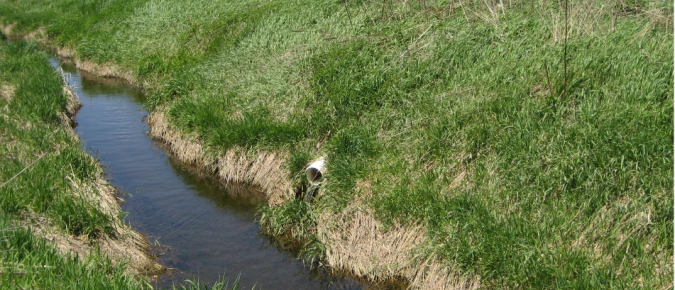Discovery Farms project finds that layering practices and implementing them at specific times can reduce phosphorus loss and positively impact water quality.
In this video, Kelsey Hyland and Laura Paletta from UW–Madison Extension’s Ag Water Program explore phosphorus stratification in Wisconsin agricultural soils and its implications for water quality.
This article was originally published in the Journal of Nutrient Management. Overwintering cover crops is a proven way to further reduce phosphorus losses from cropland. In a cropping system, soil and nutrients work together to deliver healthy plants and productive crops. Fine-tuning soil and nutrient management to achieve profitable harvests and water quality protection can seem […]
Introduction Extreme weather is nothing new in Southwest Wisconsin. However, the frequency at which communities and farmers experience this extreme weather in the form of flooding has increased. According to the Wisconsin Initiative on Climate Change Impacts (WICCI), storms that drop 4 inches of rain in 24 hours or less will double by the year […]
2024 has provided no shortage of variable weather patterns here in Wisconsin. Each season has contributed to a unique domino effect the likes of which we haven’t seen in some time, if ever. We began by emerging from the single warmest winter on the books for Wisconsin, allowing for field work to take place early and plenty of tillage was concluded before the spring rains arrived.
This article highlights how cover crops impact phosphorus loss dynamics, including 1) soil and water movement and 2) placement and forms of phosphorus within the soil. Ultimately, situations where cover crops will have the largest impact on total phosphorus loss will be discussed to help farmers and conservation professionals maximize impact.
This article includes 1) impacts of climate change in spring in Wisconsin, 2) the consequences of climate change with a focus on phosphorus, and 3) practices to increase farm resilience in the face of rapidly changing weather in spring.
Chelsea Zegler and Dr. Jamie Patton continue their conversation from last year on how soil test phosphorus (STP) impacts water quality. Learn how different cover crops and soil health practices change water dynamics, the location and the availability of phosphorus in different soil types.
A common misconception about livestock manure is that it is simply a waste product of the farm. However, manure is rich in many nutrients and is a valuable resource when applied back onto fields that can benefit from manure application. Research has demonstrated positive impacts to soil quality/health, crop production, and overall farm management when manure is managed effectively.
Extension’s Ag Water program at the University of Wisconsin-Madison is looking for high-quality on-farm data to help improve our understanding on how soil health practice impacts soil phosphorus stratification.
The use of tile drainage is becoming more popular in Wisconsin. Installing a tile drain system can be a great tool to dry soil out faster, improving the timeliness of field operations throughout the cropping season. However, how do tile systems influence water movement off of the field, and what are the water quality implications?
Guolong Liang, outreach specialist for the Agriculture Water Quality Program of Extension in the Central Sands of Wisconsin, guest hosts this episode of Field Notes. Guolong talks with UW-Madison Horticulture Professor and Extension Specialist Jed Colquhoun about the use of cover crops to reduce nutrient runoff in canning and processing vegetables. For the farmer perspective, he chats with John Ruzicka of Guth Farms in Bancroft, Wisconsin and Dylan Moore, a Seneca Foods Field Representative, about Guth Farm’s journey in integrating no-till and cover crops into their processing vegetable rotations.
















